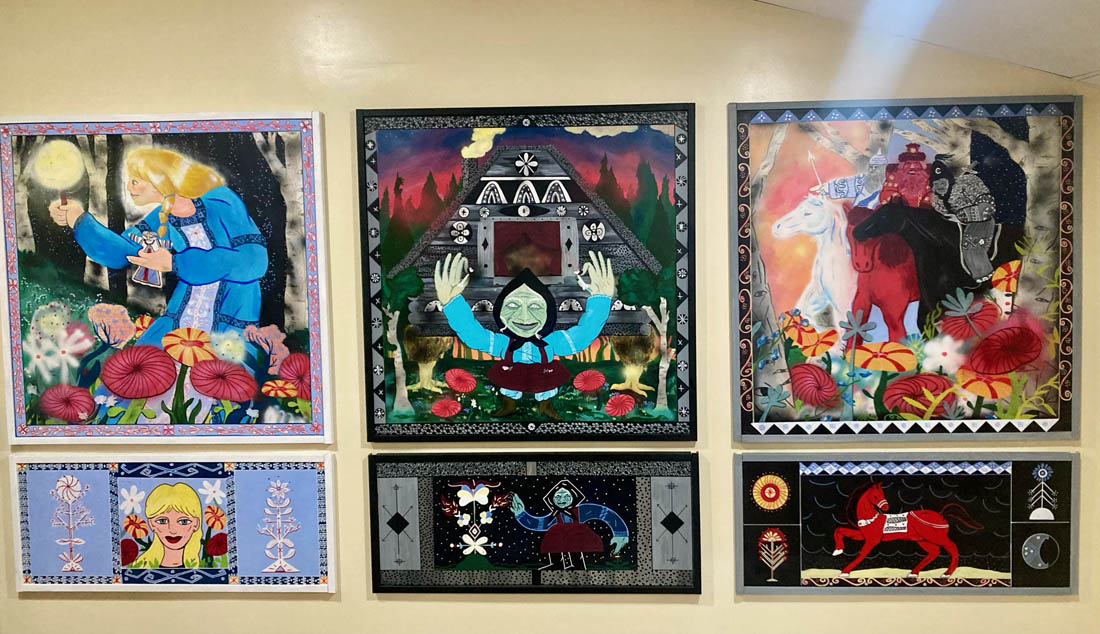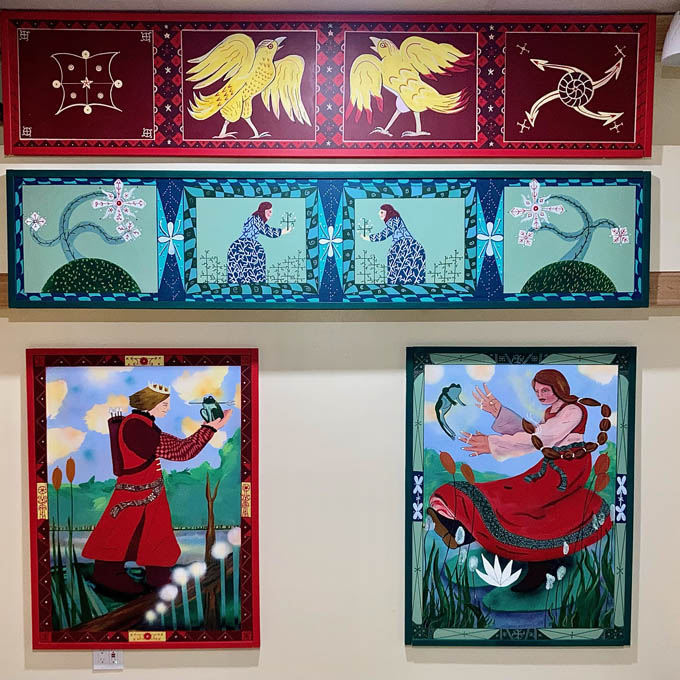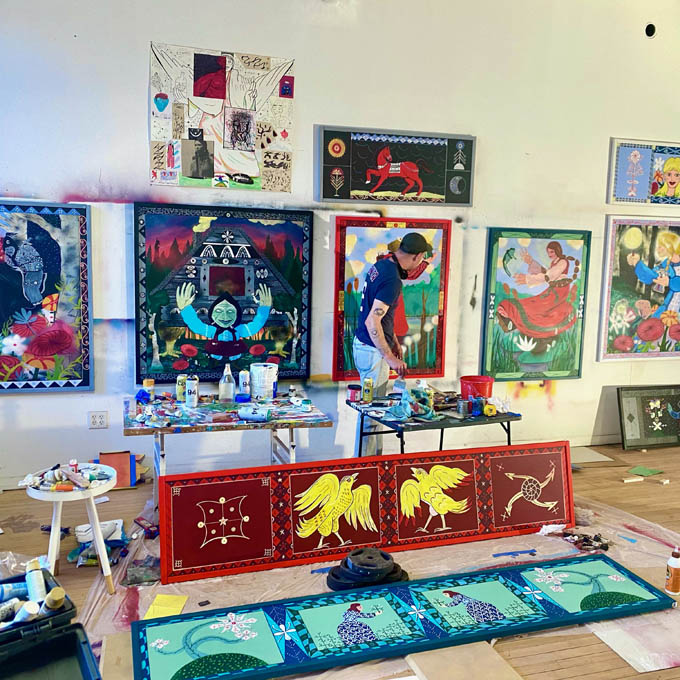Izba Fairy Tale Art by Dylan Griffith
Background
In February I was hired on to repaint the murals on the spa room lost due to a fire. Originally the plan was to recreate the original murals, this time on removable panels. After some deliberation, a new plan was made to create a series of new works based off Slavic folktales. The completed project would be for five large narrative paintings along with five smaller decorative paintings.
Not being familiar with Slavic folktales, I began research, reading through dozens of fantastic stories from Eastern Europe. In the end found myself drawn to the story of Vasilisa the Fair, a story similar to the western fairytale of Cinderella, and the story of The Frog Princess.
I then had to consider what parts of the story would be best to depict, and in what style should the final paintings be rendered. I then immersed myself in Slavic folk art, textiles, and Russian illustrators. I came across the work of Soviet era Artist Ivan Bilbin, famous for his highly stylized fairytale illustrations. I decided to take inspiration from his color palette and layout composition for creating my finished work, while also keeping in mind that I wanted to create entirely one of a kind pieces for Izba Spa.



Vasilisa the Fair
The long wall to the right as you walk into the spa room depicts three scenes from the story of Vasilisa the Fair. In the tale, Vasilisa is abandoned in the woods by her evil stepmother and step sisters, all she has with her are the clothes in her back and an enchanted Montanka Doll given to her by her deceased mother. Deep in the woods she finds the enchanted hut of Baba Yaga. Baba Yaga is recurring character in Slavic folk tales, a witch who lives in a hut which stands on chicken legs, and who often fills the role of donor, matriarchal figure, or villain depending on the story. Vasilisa falls into service of Baba Yaga, and is tasked with myriad of difficult chores around the forest and in Baba Yaga’s home. She is guided by her enchanted dolls and is able to complete all the tasks, but is also worked to exhaustion.
The next day, while Baba Yaga is away, Vasilisa witness three men on horseback pass through the forest. At dawn a rider in white and on a white horse, at noon a rider in red on a red horse and at dusk a rider in black on a black horse. That night Baba Yaga returns and is impressed with Vasilisa’s ability to complete all her tasks, and asks Vasilisa if she has any questions and she asks about the riders she saw, to which Baba Yaga tells her the one in white is the day, the one in red the sun, and the one in black the night. Vasilisa then asks Baba Yaga if she in turn has any questions and Baba asks her how she was able to complete all her tasks. Vasilisa says it is thanks to her “mother’s blessing”. Impressed Baba Yaga rewards Vasilisa with a magical skull with a flame inside, which Vasilisa uses to guide herself out of the woods and back to her home. Where the magic flame burns her stepmother and sisters to ashes (a scene I did not decide on depicting.)
The Frog Princess
The paintings on the back wall depict to two main characters in the story of The Frog Princess. In this tale, a young prince is told that if he shoots and arrow and follows it to where it lands, he will find his princess. His arrow misfires and flies into a nearby swamp, where he finds it in the mouth of a frog. There are many different versions of this story, in some the frog is magic, in other’s Baba Yaga helps the young prince and turns the frog into a princess, in another the frog is a princess that has been cursed by an evil wizard. In the latter, the prince must preform a number of tasks for Baba Yaga, in order to get a magic needle and she rewards him by lifting the curse. Once the curse is lifted, the frog is revealed to be Vasilisa the Wise, who was cursed for being too, beautiful, smart, and skilled.
Artists Bio
Dylan Griffith is an Arizona born artist and illustrator based out of Denver, Colorado since 2017. He has a studio at The Evan’s School, through Redline Contemporary Art Center’s satellite studio program. Drawing on a library of cultural and personal symbols, his work explores the material and metaphysical interaction between people and their environment, specifically in the American West.
To view more of his work you can check out his website https://www.dylansgriffith.com/ or find him on Instagram @dylansgriffith
